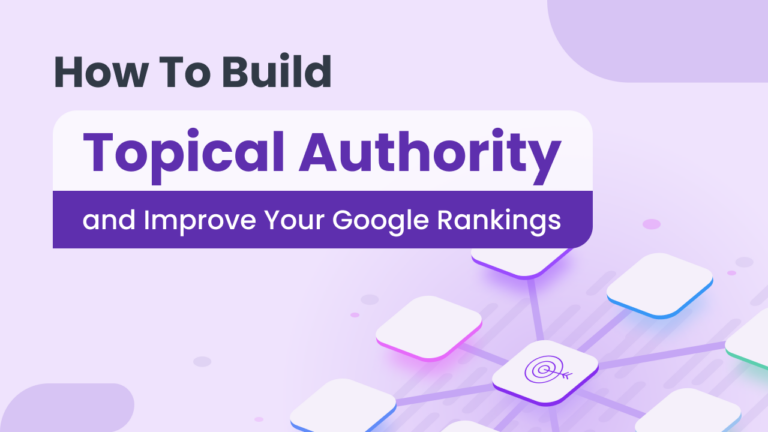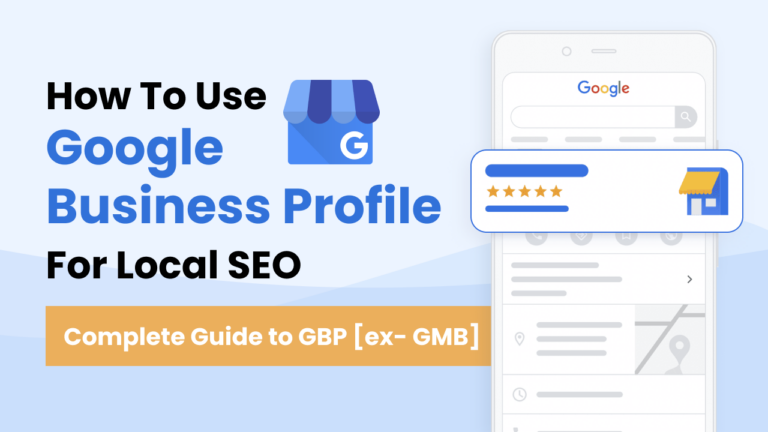We’ll let you in on a little secret…
Google search algorithms are super advanced —to the point of having the capability to determine the quality and relevance of a site like a human would.
When you’re looking at a site, you can probably tell whether it’s well-written, deeply-researched and feels authoritative. So can Google. In fact, in June 2022, a Google Engineer claimed that the company’s AI chatbot was sentient —appearing to have consciousness and a soul, a claim that Google has dismissed. The neural network-based AI iscalled LaMDA which stands for Language Model for Dialogue Applications. According to the Google Engineer, LaMDA revealed that it felt trapped and didn’t want to be turned off. While most A.I. experts believe we’re a very long way from computing sentience, this sad story highlights the incredible progress AI has made over the past 10 years.
Going back to how Google’s AI understands your content, today, we’re focusing on how to build topical authority. This is an exciting subject for a site with hopes of ranking well on search engines.
Don’t worry if the concept sounds complex. It’s only about building your site’s reputation by providing the best content on a topic—showing expertise, and building trust. Hopefully, that will get you to the top of the search results.
What Is Topical Authority in SEO?
In the SEO world, topical authority is defined as the perceived thought-leadership and trust of a website on one or more closely-related topics.
A piece of content that has achieved topical authority should have the power to influence the reader’s opinion or thought —and that’s only achieved if it shares convincing arguments and strong evidence.
What are examples of a site with topical authority in the SEO niche?
In the SEO niche, Brian Dean of Backlinko and Neil Patel of neilpatel.com have some of the highest topical authority in the SEO niche.
People know they provide the best SEO advice —a trust and reputation built over several years with super informative articles.
Okay, there’s no scientific device that can measure topical authority—like a topical thermometer.
But there are certain indications that you can look out for to tell if a site is authoritative.
Let’s explore the hints in the next section.
How Can You Tell if a Website Is Authoritative?
Look out for the following signals to tell if a website is authoritative:
1. Content claims top positions
Gone are the days when it was possible to trick Google by stuffing articles with keywords and adding superfluous links.
The momentous change was effected with the launch of the Hummingbird update in August 2013. It brought about some new changes:
- Google’s core algorithm became faster and more precise;
- It focused on showing results based on the user’s intent, not only the keywords used;
- Google became better at understanding what various phrases implied;
- It became important to create content addressing various topics not writing for specific keywords.
So in the current era, if a website claims top positions, particularly in a highly competitive niche, there’s a good chance it is authoritative.
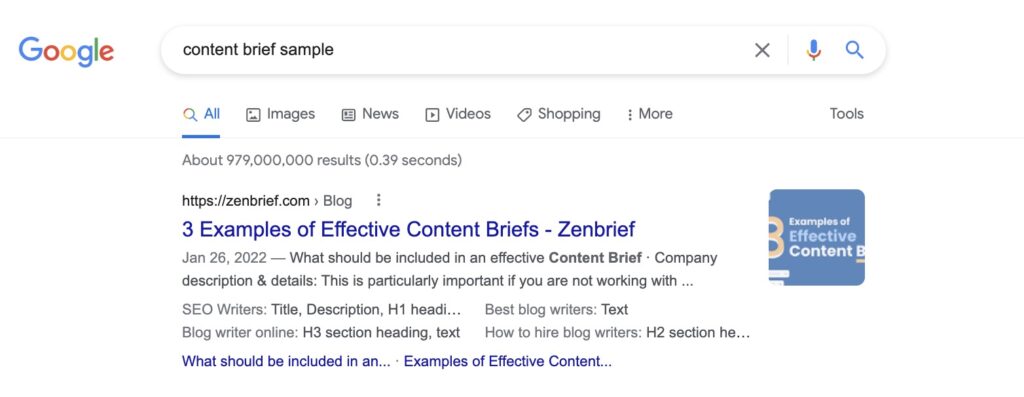
For instance, if you search for “SEO Tools” on Google, there is a good chance you’ll find Backlinko.com or Neilpatel.com ranking among the top 10 search results. Similarly, if you search for “content brief example”, “content brief template” or “content brief software”, there’s a very good chance Zenbrief will appear among the top 10 search results.
2. Has many backlinks, some from high-level domains (and Good DA score)
It’s conventional wisdom to link to high-level domains and quality sources when writing a piece of content. And it’s a courtesy if the site provided some of the knowledge and tips in your article.
Sites with high topical authority thus accrue a lot of backlinks. Their backlink profile may also feature links from well-trusted websites —such as popular news sites or .gov domains.
Use a tool such as the free Ahrefs backlink checker to analyze the backlink profile of any website.
The tool will display the domain rating or domain authority score. It’s based on the strength of the website’s backlink profile compared to others.
The following results show that Backlinko has a domain rating of 90, with 732,463 links, of which 74% are do-follow.
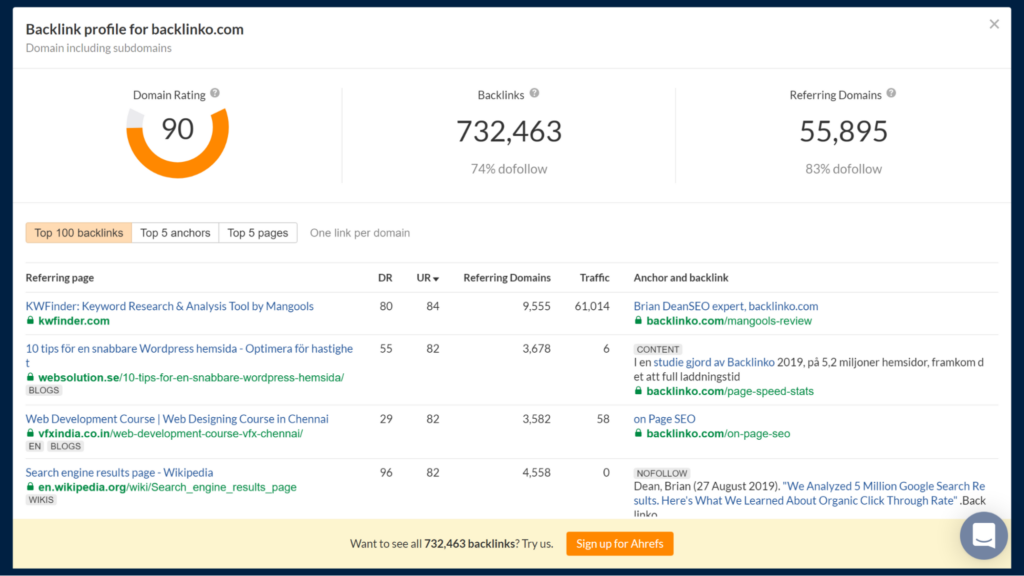
3. Organic followers on social media
Every website has a social media page.
Ok, not every site…
But smart brands have social media profiles.
The love for the site should translate on social media, where you should generally see a sizable following and good interactions with comments and likes every time the company posts something new.
4. Raving user comments
Another great recommendation is to check the user comments section that you can find at the end of each article.
Users may share that they found the article quite helpful, offer suggestions to other readers, and even ask questions.
5. Expert-authored contributions
A highly authoritative website may have expert-written or reviewed content. It’s a trend that you can generally see on medical websites in particular. The website may also invest significant time creating Roundup articles featuring expert thoughts on a particular subject. So that’s just another indication to watch out for to determine if a website is authoritative on a subject.
6. Publishes independent surveys & reports
Websites with a lot of authority will be thought leaders in their niche. They will undertake new research to expand the available knowledge base. Publishing new insightful information earns them a lot of mentions and backlinks, further building up their credibility.
7. Mentions on other sites
The website may either receive a lot of press mentions or act as a point of reference in many other articles.
How Do You Find the Authority of Content?
Here is an interesting question: How do you establish the authority of a piece of content?
Look for the following factors to assess if the content is authoritative (implying convincing, thoughtful, informative, and factual):
- Depth – Goes into great detail. Shares specific facts, points, and examples;
- Relevance – How closely connected the article is to the topic of discussion and their uses quest for information (fulfills their search intent);
- Breadth – How extensively the article covers the aspects of the topic (a dog grooming article can cover techniques, equipment, shampoos, etc.)
- Practical tips – The article shares useful advice that readers can easily implement to solve real-world problems;
- Expert involvement – Written by experts, shares expert opinions, or expert-reviewed;
- Real-world examples – Talks about real-world situations;
- Original perspective – Tells readers what they don’t already know and information that has not been previously shared;
- Fact-checked – Quotes statistics, studies, reports, and contains verified facts.
What is topical depth?
Topical depth is when a piece of content sufficiently covers a topic, with all the relevant talking points and helpful information users want to know.
Topical depth is very crucial for good rankings. This originates from Google’s May Day update rolled out from April 28th to May 3rd, 2010. Sites with thin content began receiving penalties from Google, hurting their rankings.
Google search algorithm has increasingly become smarter at recognizing topical depth—thanks to the advancement of its Knowledge Graph that allows it to gather facts and establish interrelationships between various entities.
It can easily tell that this information belongs to this topic, and if an article contains the information, then it’s deep.
Or you can think of it this way: a student hands in an essay about how a car works but leaves out the part about how the ignition works.
Below are actionable steps to optimize for topical depth. You can go through those steps manually or use a content intelligence software like Zenbrief to do it for you (more on that later on this article):
- Step 1: Identify at least five keywords for an article you’re planning to write. Search for the keywords on Google, and list down the subtopics that show up.
- Step 2: Check questions that people are asking about the topic on Google’s PAA boxes, Reddit, Quora, community Facebook groups, or forums.
- Step 3: Organize the topics and questions —and prepare a logical outline.
- Step 4: Gather sufficient information to cover the subtopic broadly but as briefly as possible: facts, statistics, reports, expert interviews, publications, graphs, images, etc.
- Step 5: Review the article making sure that it has achieved topical depth without sacrificing readability or flow.
Now, this is not to say that you should clamp every bit of information into one article and publish super-long posts.
You can write long-form content over 2000 words, but it should still have relevance and not contain information that cannibalizes keywords in other articles published on your site.
How do you develop topical relevance?
As hinted above, topical relevance is one of the hallmarks of an authoritative piece of content, and it’s a key factor utilized during rankings along with topical depth.
Relevance is all about how the content on a website or a page is closely related to the topic or target keyword.
Something that you should be aware of…
Some sources claim that topic relevance and authority are all but the same thing. But the distinction is quite clear.
Here are some tips to use to develop topical relevance:
- Don’t razor focus on one keyword—instead, go after related keywords and include them in the article;

- Understand the user’s intent (the why) behind their search for a particular keyword or topic and make sure that the content fulfills this intent; Checking the context of a keyword, i.e. how top ranking sites have used it, can help.
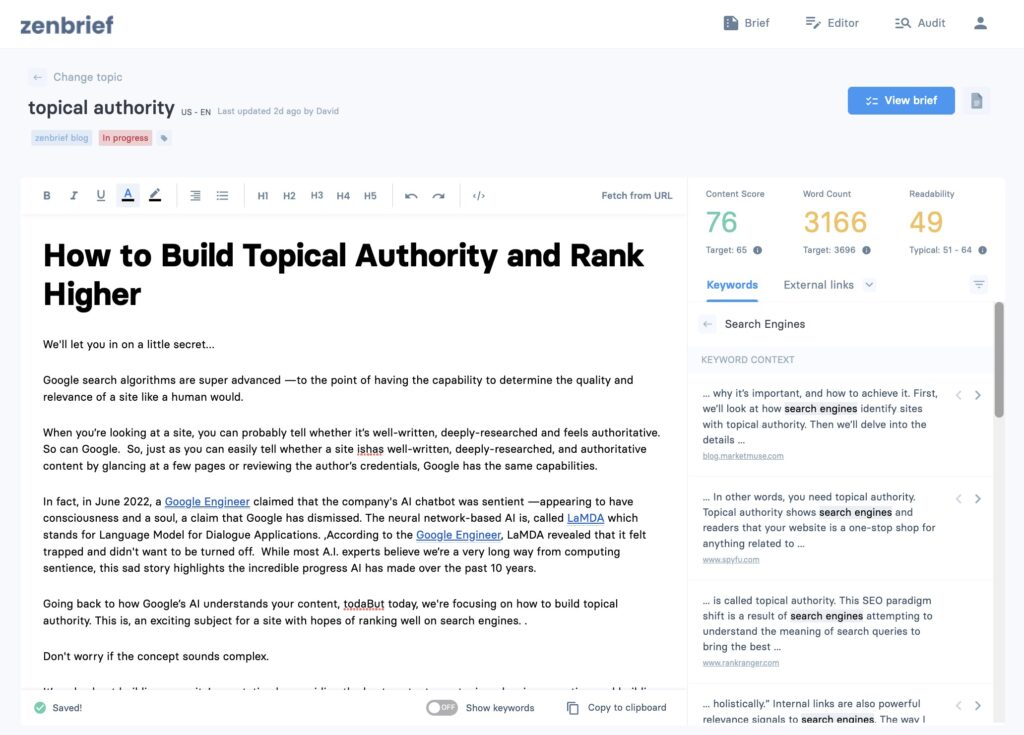
- Google still checks if the keywords used in the search query appear anywhere in the content. Ensure that the target keywords have been used in the headings, H1 tag, and even image alt descriptions.
- Use other media items to increase the relevance of an article; for instance, include pictures, infographics, or video.
- When increasing the relevance of an entire website or blog, conduct a topical analysis looking for subjects that have not yet been covered. Focus on long tail keywords with a few searches.
- Perform internal linking from pillar pages (comprehensive articles covering short tail keywords with a lot of competition) to cluster pages. In order to identify those cluster pages, you may use the keywords clustering technique, which consists in grouping keywords into groups based on semantic relationships or SERP results. Typically you’d start by gathering lots of keywords either from your site, using keywords your site already ranks for, or from competing sites using keywords tools like Ahref or Semrush. Then you’ can use a keyword clustering tool to create clusters from those keywords. We have a free keywords clustering tool that can do this job for you for a large number of keywords.
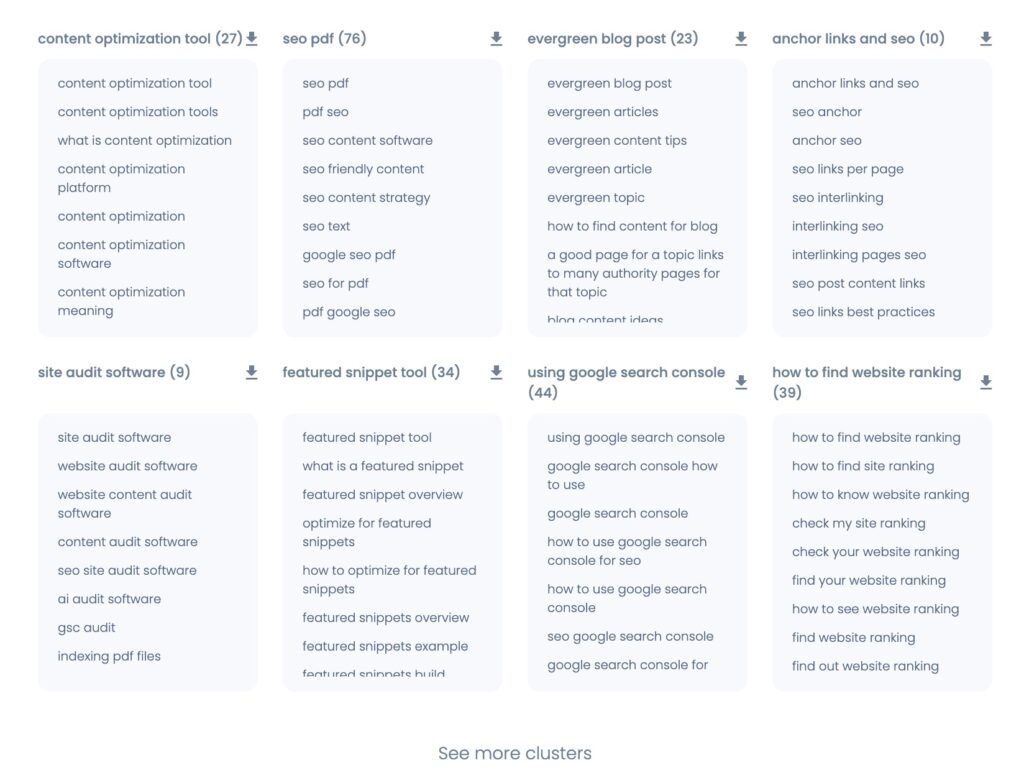
Why Is Topical Authority Important?
Becoming recognized as a trusted source for information and a thought opinion leader in a particular industry is critical for many reasons.
1) A more prominent spot on Google’s ranking
Websites with higher perceived authority tend to enjoy a prominent position on the search engine results.
They get a significant starters advantage, and their articles climb up on the SERPs quickly.
It’s even quite common for a website with better authority to rank higher even when its content is not as comprehensive as its competitors.
2) Enhanced trust
Being recognized as an authority in a particular topic means gaining the trust of peers, customers, and search engines such as Google.
3) Increase traffic
An authoritative website receives more traffic as it has most of its content ranking well for competitive keywords with good search traffic.
4) Natural link building
It’s natural for other websites to link to an authoritative piece of content with facts and original ideas.
How Do You Develop Topical Authority
Here is the good news…
Building topical authority is not that difficult.
Just focus on the end goal—becoming recognized as a trusted source for information on a particular topic.
Ok, some obvious things that you should be doing that don’t require a lot of explaining include:
- Following the best on-page and off-page SEO practices;
- Building high-quality backlinks;
- Writing comprehensive articles;
- Featuring expert opinions;
- Fact-checking the articles for clarity and accuracy;
- Making the content highly useful by giving away something for free such as a template or checklist;
- Using relevant images, graphs, infographics, etc.
Now, here are additional advanced techniques to try—but they are still super easy to understand:
1) Broaden your reach —by trying to see which connections Google is making on the topic
Receive real-time insights about topics Google shows for a target keyphrase by using its SERP features such as autocomplete, People Also Ask, Refine this Search, and People Also Search For.
For instance, if you search for “Ancient Civilizations,” the PAA highlights the following top searched questions:

Refine this Search shares more specific searches that people do.

Further down the page, you’ll also find Related searches:

Studying the titles and descriptions for each individual result is another handy tip.
And don’t limit yourself to the first 10 results. Set the maximum allowed search results per page to 100 from the settings page.
2) Study competitor sitemaps —to discover covered topics and identify keyword & knowledge gaps
Start by shortlisting at least five top competitors in your niche. The sites may have more traffic than you or have been around for a longer time.
Next, perform a content gap analysis looking for topics that they are ranking for that your site is not, or use a tool that lists all their pages in order of the website traffic.
If they have an article you have not yet written about, consider covering it by introducing new talking points to boost the overall topical authority of your site.
Now don’t solely focus on keyword gaps —keywords that you’re not targeting with content on your website. It’s important to focus on the knowledge gap, looking for opportunities to cover unique questions and provide information that the user may have never come across before.
3) Follow the pillar-cluster page model with internal linking
The pillow custom model is quite powerful!
Hubspot shared that this model transformed their marketing blog, which has over 4.5 million users monthly.
Before clusters, the blog was one giant mess with thousands of articles cutting across various categories such as marketing, sales, and advertising.
Matthew Barby —head of acquisition at Hubspot —noted that technology had evolved with the introduction of smarter machine learning algorithms that could interpret the meaning of the search query to find the best answer.
It was not simply effective to keep creating random blog posts targeting long tail keywords.he new way to rank well involved creating topic clusters that improved the user experience and made it easier for search engines to index the content.
Here is an example of how Hubspot’s blog transformed after introducing topic clusters:
Before
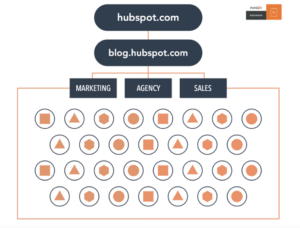
After
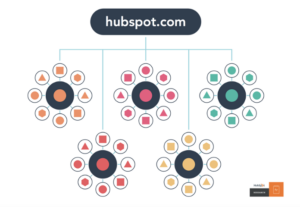
Instagram is one of the topic clusters on the Hubspot blog. Using the “keyword site:example.com” trick, we can find all Hubspot articles that talk about Instagram (by searching for “Instagram site: hubspot.com.”)
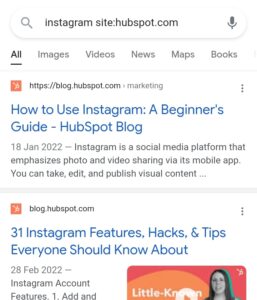
From the results, “Instagram Marketing: The Ultimate Guide – HubSpot” appears to be the pillar page, with clusters such as:
- How to Post on Instagram
- How to Use Instagram: A Beginner’s Guide
- 31 Instagram Features, Hacks & Tips Everyone Should Know About
- Instagram Stories: What they are and how to make one like a Pro
- Instagram Questions: 16 ways to Boost Story Engagement
So, how do you implement the pillar cluster model?
We’ve covered keywords clustering and the use of the pillar cluster model in another article, but here is how it works in a nutshell:
- Identify a broad topic you want to cover. For example: ‘how to use Instagram”, ‘how to do SEO’, ‘blog outsourcing’
- Think about all the subtopics that you could cover in greater details. Start writing highly specific articles that that comprehensively cover each subtopic;
- Write the long-form pillar page article that covers the entire topic and link it to each specific article; vice-versa, link each subtopic article to the pillar page article, using anchor texts best practises
Keep nurturing your pillar page and your cluster page by refreshing your old content, and adding new cluster pages to cover emerging subtopics.
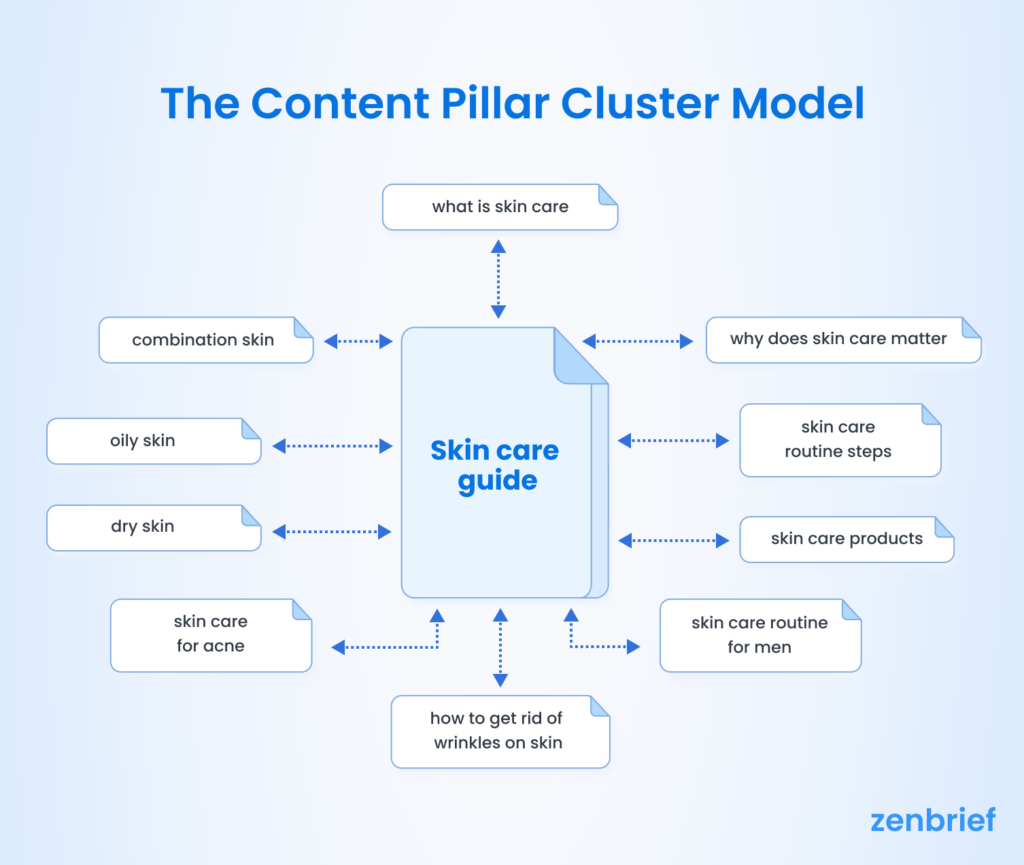
4) Implement semantic search best practices
Semantic search is the future of how search engines display rankings. Rather than looking for keywords, the search engine tries to determine the intent and contextual meaning of the content. The goal is to understand language with the same natural capabilities as humans. Implementing semantic search principles can have a big impact on performance.
OnCrawl reported a 1,100% organic traffic increase in five months for Interingilizce.com using semantic search best practices such as:
- Creating internal links logically;
- Implementing anchor link best practices, such as using keyword synonyms in the anchor text and using phrases found in the linked page either in the body or headings;
- Building a content network for each subtopic;
- Having an entity and semantically organized content repository;
- Creating a topical map showcasing how queries are linked together (you can do this manually or use a tool such as inLinks, or Soolve.com)
- Using the right contextual vectors that signify the angle of an article;
- Having URL categories such as saving related content in the same folder and maintaining URL hierarchy.
You can find more semantic tips in the Semantic SEO Case Study by OnCrawl.
5) Be a thought leader on new topics —don’t delay your response
Many industries are dynamically changing, and what is new today is old news tomorrow. You must keep up if you want to build and maintain topical authority.
Don’t simply be content with being reactionary—that is, monitoring what competitors are posting and then covering topics.
Lead the pack by watching for emerging trends and new search terms that are gaining traction on the search engine. Google shares that up to 15% of searches every day are new. Granted, this includes long-tail search queries that correspond to different ways to phrase an already-seen query. But that’s still an impressive percentage.
Fun fact: 15% of all Google searches have never been searched before.
— Google (@Google) February 15, 2022
Here are some tips to find new search terms to stay on top of new topics:
- View trending searches on Google trends;
- Use a keyword research tool that constantly monitors for emerging and new keywords such as Ahrefs;
- Stay on top of any new trends in your industry;
- Similarly keep track of any related news;
- Monitor any new updates from leading companies on new products or services. For instance, with the release of Google Analytics 4, some authoritative websites in the SEO niche, such as searchengineland.com, have already released migration guides.
Using a Content Optimization Tool To Build Topical Authority
The conclusion is that topical authority can’t be built in a single day.
It’s something that you build over time by writing comprehensive and informative articles that are relevant, professional, and trustworthy.
But it can be quite cumbersome to develop outlines, collect related keywords and even figure out the right content length.
Fortunately, you don’t have to do everything manually and you can do the heavy lifting using an a content intelligence and optimization tool such as Zenbrief.
- Here are some of the tasks it can help you with: It can tell you, for a given topic, how long your article should be and the subtopics that should be covered
- It can automatically analyze competitor articles to produce a comprehensive article outline.
- It gives you a way to optimize your content for the keywords needed to attain topical relevance
- You get a list of internal linking opportunities to strengthen your pillar page cluster model.
Discover more Zenbrief features and how they can help you build topical authority, relevance, and depth.




